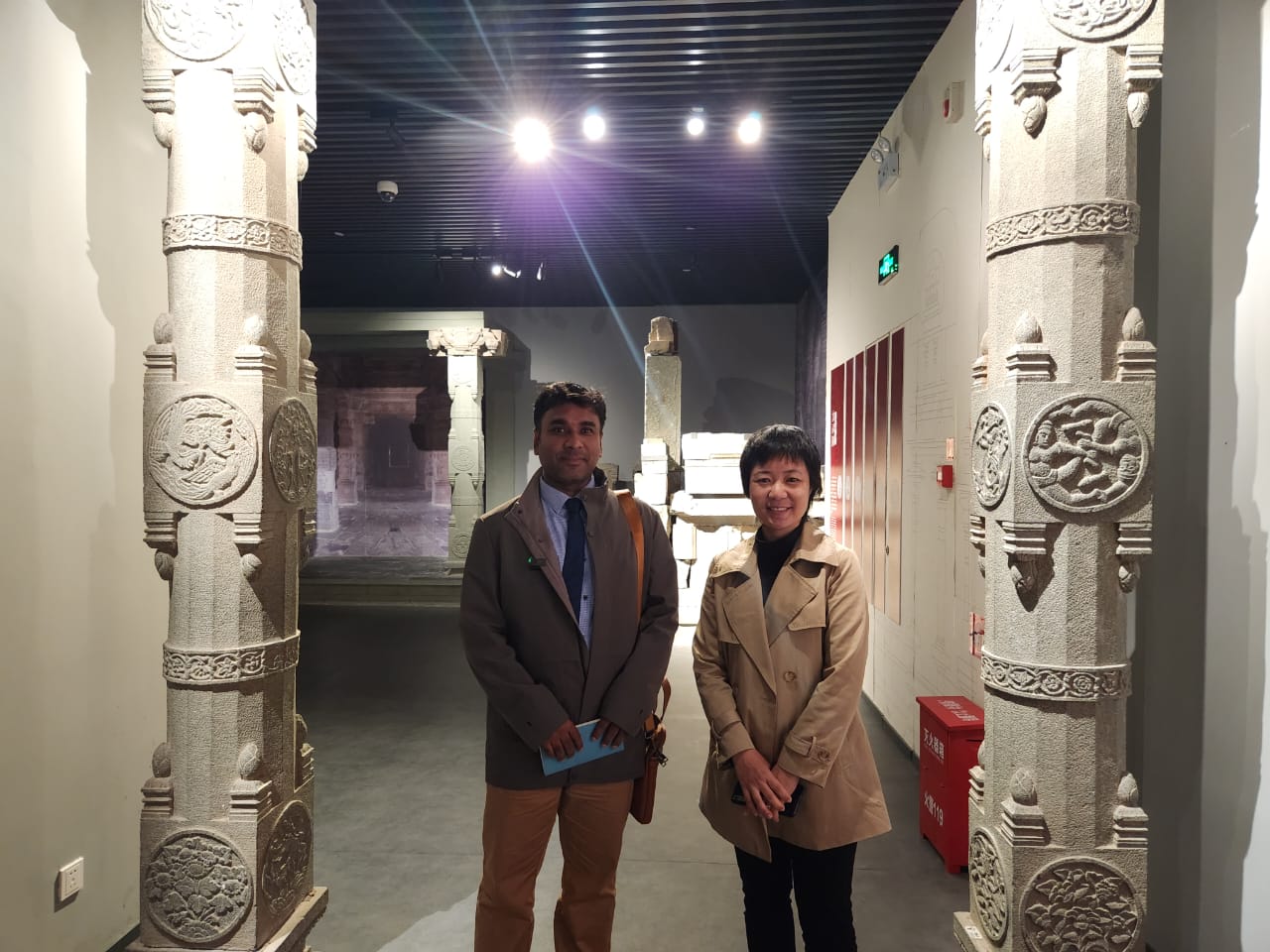There were Hindu historical sites in Quanzhou, China, during the Song and Yuan dynasties. Scholars believe that Quanzhou contained a network of more than a dozen Hindu temples and shrines, some of which included the Chedian shrine and others that are now preserved in the Quanzhou Maritime Museum.
One notable example is Kaiyuan Temple, which is predominantly a Buddhist temple but contains Hindu elements like the images of Shiva, Vishnu, and other Hindu gods on the back two pillars. These remnants provide evidence of the cultural exchanges that occurred between India and China during the medieval period due to maritime trade.
During the Song and Yuan dynasties, Quanzhou, a major port city in China’s southeastern Fujian Province, hosted a significant Hindu presence. Merchants from India, who had established strong trading networks, contributed to the construction of numerous Hindu temples and shrines, leaving behind a wealth of architectural and artistic heritage. Some of the key aspects of the Hindu history in Quanzhou includes:
- Trading Hub: Quanzhou served as one of the world’s busiest ports, attracting Indian merchants seeking commercial opportunities.
- Network of Temples: Historians estimate that there were over a dozen Hindu temples and shrines in Quanzhou and nearby regions.
- Cultural Exchange: The fusion of cultures led to the creation of hybrid forms of architecture and iconography, reflective of both Indian and Chinese influences.
- Notable Structures: Noteworthy examples include Kaiyuan Temple, where Hindu imagery is present on the back two pillars, and the Chedian shrine, which is believed to be part of a larger complex of Hindu structures.
- Forgetting and Rediscovery: Much of this history remained unknown until the 1930s, when discoveries of Hindu sculpture and inscriptions began to emerge. Many of these items are now housed in the Quanzhou Maritime Museum.
- Continued Interest: Recent efforts by the local government indicate a growing appreciation for this aspect of Quanzhou’s history, and there is ongoing research aimed at better understanding the period.
This history reflects the interconnected nature of global trade and cultural exchange during the Middle Ages, highlighting the importance of Quanzhou within the broader context of maritime trade along the Silk Road.
Contemporary Hinduism in Quanzhou include:
- Surviving Temples: Kaiyuan Temple, while primarily a Buddhist site, contains Hindu elements such as images of Shiva, Vishnu, and other deities on its back two pillars. There is also a Shiva lingam in the center of the popular Toji Tower area.
- Community Preservation: Local families continue to maintain and preserve these sites, despite limited awareness of their significance among the general population.
- Government Support: The local government has shown increased interest in preserving and promoting Quanzhou’s Hindu heritage, providing funding and resources for restoration projects.
- Integration: While Hinduism is less visible in Quanzhou today, it remains integrated with the region’s diverse religious culture, alongside Buddhism, Christianity, Islam, and Taoism.
Despite the decline in Hindu practices since the Ming and Qing dynasties, Quanzhou maintains a small but vibrant Hindu community, and efforts are being made to raise awareness and promote the region’s rich Hindu heritage. The local government has shown increased interest in preserving and promoting Quanzhou’s Hindu heritage, providing funding and resources for restoration projects.
- https://www.thehindu.com/news/national/behind-chinas-hindu-temples-a-forgotten-history/article4932458.ece
- https://www.academia.edu/9209785/The_Ancient_Hindu_Heritage_Sites_in_the_Quanzhou_Port
- https://www.c3sindia.org/post/tamil-temples-in-quanzhou-by-siddhant-nair
- https://www.jstor.org/stable/20078619
